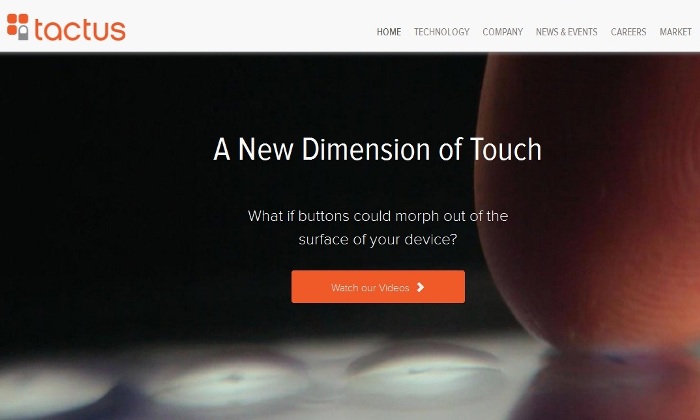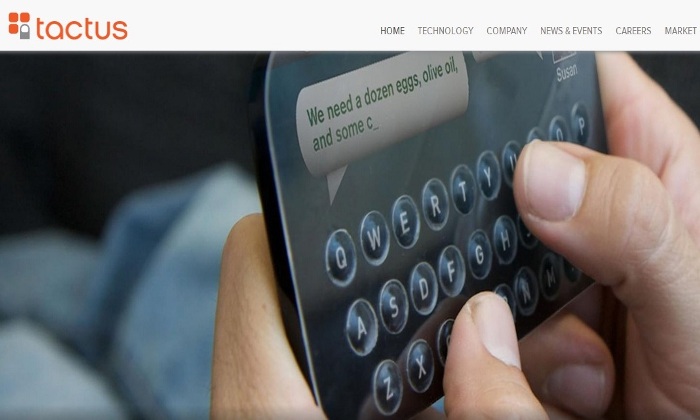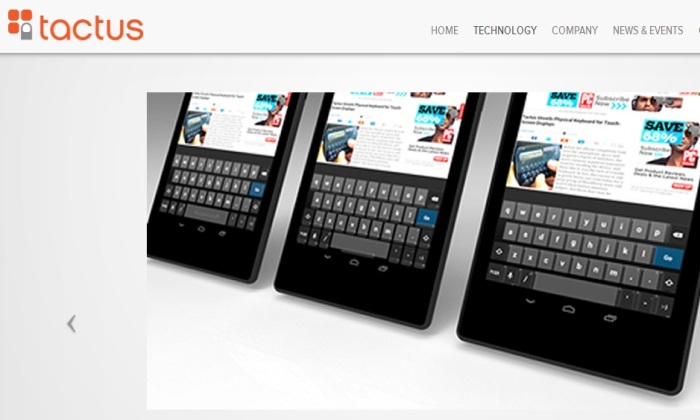A Physical Keyboard that Isn’t: Meet the Tactus Morphing Tactile Surface
Ever since the iPhone dominated the smartphone market, mobile phones started losing their physical keyboards. Touch displays became almost the standard. The once highly popular BlackBerry phones and their iconic keyboards have become almost extinct. Mobile phones with only touchscreens and maybe a few buttons in the front are all the rage these days. Nobody seems to mind the trend that even the sliding keyboard toting “pro” versions of mostly touchscreen-based devices have also ceased to exist.
But certainly, there are those who still miss the good old days when they could feel the keys of their mobile phones as they compose messages. There are still advantages in being able to feel the physical keys of your mobile phone. Fortunately, it may not be long before consumers can see an evolution in the physical keyboard for smartphones and tablets. A company called Tactus has developed a unique technology that can integrate “physical” buttons on touch displays.
A Physical Keyboard that Isn’t
What Tactus’ Morphing Tactile Surface (MTS) technology does is to make a keyboard appear and disappear on top of the display. Through a electrical signal reactive fluid-based, MTS creates bumps on the screen that serve as the physical keys. Click here for a demo of this “shape-shifting” smartphone touchscreen keyboard.
How Do They Do It?
MTS can be described as a microfluidic panel that allows users to feel physical buttons on their flat touch displays. They appear when they are needed and disappear when not needed. This is achieved through the use of a multi-layered panel that includes a fluid-filled plastic panel coupled with a cylindrical fluid reservoir replacing the typical glass used on top of most displays. What creates the bulges that serve as the physical keys is the proprietary oil (the fluid in the fluid-filled plastic panel).
There have already been several attempts to offer a technology that can simulate the experience of using a physical keyboard. These include the use of localized electric shocks on the display to enable the finger to distinguish the area of the display it is touching as well as the use of piezoelectric actuators that make the vibrations feel localized. The goal is mainly to create a touch sensation that helps develop familiarity with the keys being pressed, something that the commonly used vibration-based haptic feedback is unable to provide.
Tactus’ MTS is the one that can be considered close enough to creating that familiar physical keyboard experience. With it, real bulges on top of the on-screen keyboard can be felt. It appears when needed and conveniently vanishes when keyboard inputs are no longer being used.
Advantages
Obviously, this new technology provides the advantage of being able to type in characters faster and probably without the need to always look at the display. Feeling the keys with your fingers can help improve typing accuracy. It may even allow you to compose text messages without looking at the display, in the same way many people used to with their old mobile phones. Likewise, it makes for a better gaming experience.
Disadvantages
Having this “physical” keyboard technology, however, has some disadvantages. For one, it can take away the scratch protection afforded by the tempered glass (Gorilla Glass or Dragontrail) used on smartphones and tablets. It also means an additional cost. Obviously, manufacturers who will be employing this tech will have to pay for it. Also, if it is not going to be seamlessly integrated into the display, it can add bulk to a device and affect device aesthetics, something users may not prefer.
Availability
Tactus’ technology will soon be available as Wistron, a Chinese electronics giant, already has the equipment capable of integrating the MTS tech into touch displays. Wistron has been producing components for a number of global companies including Apple, BlackBerry, and Acer. Tactus also has investments in Wistron.
Those who want to experience Tactus MTS earlier, however, don’t have to wait for so long. Later this year, Wistron shall have produced a protective case for the iPad Mini. This protective case will enable typing in the same way users would on an iPad Mini except that users will already have that physical feel of the on-screen keyboard.
Being able to feel the virtual keyboard of a device is arguably one of the many things smartphone and tablet users would want to have. What Tactus is offering is indeed a move in the right direction. It is a smart smartphone or tablet feature. Hopefully, manufacturers will be able to offer this technology in their next generation of devices. Also, hopefully, they can find a way to maintain the scratch resistance of displays while having Tactus’ MTS on board.


